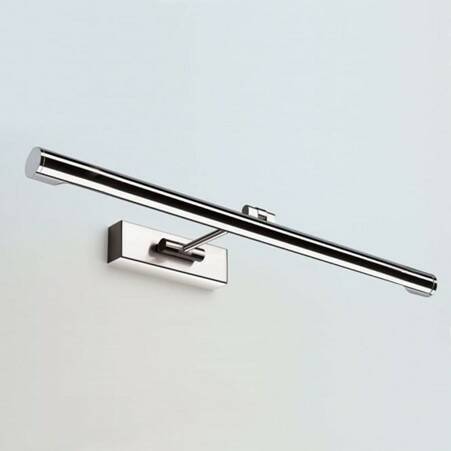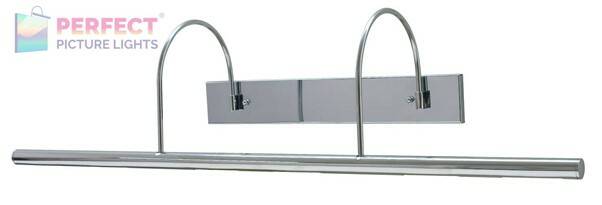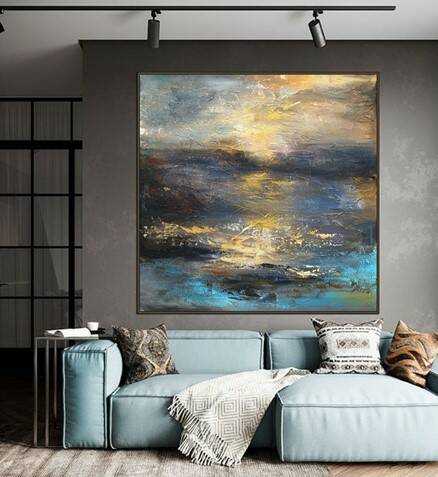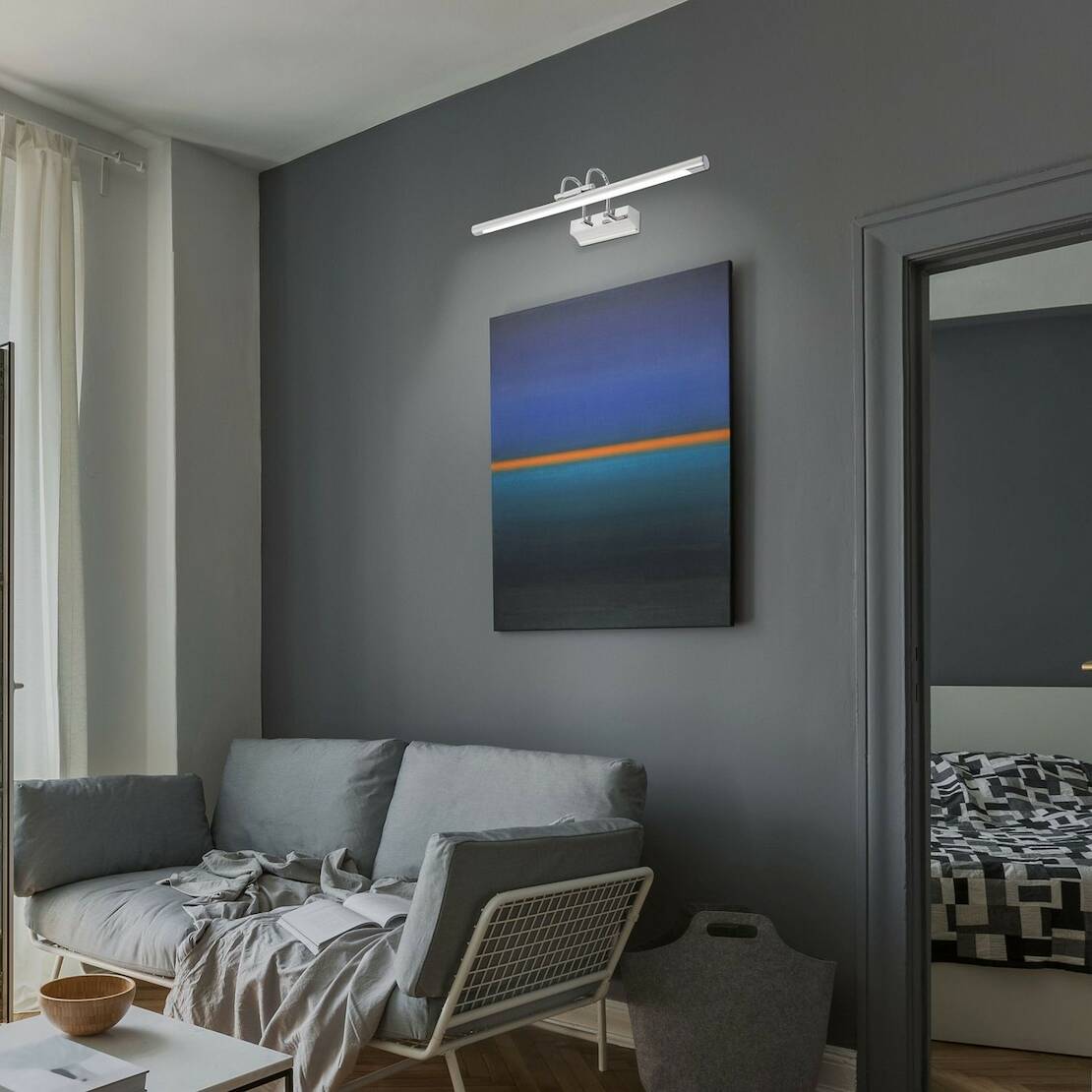- Home
- / Blog
- / Interior Design
Chrome Lighting for Artwork
01/03/2022
5 Top Considerations for Selecting Chrome Lighting for Large Artwork
When it comes to the lighting of large artwork, chrome lighting is one of the best options to consider. The chrome finish brings in a contemporary and futuristic feel to the décor. Interior designers often opt for a polished chrome finish for fittings, since it is shiny and reflective. According to the Go Paint Sprayer, it brings in attractive mirror-like aesthetics of luxury and elegance. It is certainly a sleek addition to any modern home decor. However, there are also brushed and satin options that present a matte finish, when required.

Apart from their visual appeal, chrome light fixtures are highly durable due to their corrosion-resistance. Furthermore, they generally go well with most frames and art pieces. Chrome lighting does not draw attention away from the artwork but complements it, allowing it to stand out.
However, just like with all the other art lighting options, there are a number of factors to consider when choosing the best chrome lighting for large paintings and artwork:
1. The Size of the Artwork
When it comes to selecting the right chrome lighting, size matters. The light should be centered to provide a uniform distribution of light to the artwork. A Picture light generally should cover approximately two-thirds of the width of the painting to offer a good distribution. Therefore, the larger the art piece, the longer the chrome light fixture. They also illuminate downward to about a maximum of 40 inches.


For a massive painting, you may need to order custom art light. Perfect Picture Lights handcrafts custom-sized art lighting for any big picture that is over 60 inches wide, up to approximately 150 inches wide. Their Slim Line is customizable with up to 130 inches wide shade!
2. The Type of Artwork
How you fix chrome lighting largely depends on the type of artwork. There is need to prevent glare, while equally avoiding casting any dark shadows on the art piece. Acrylic paintings are not glossy, and therefore quite forgiving, making them easier to light. However, for artworks framed with a glass front, and pictures printed on glossy paper, glare is a major issue.

Therefore, it is advisable to position your chrome light at a 30-degree angle instead of direct light, to minimize glare. A 35-degree angle is recommendable for larger paintings. For textured oil paintings, a uniform distribution of light is necessary. Sculptures and three-dimensional pieces equally require lighting from more than one angle. Glare, or seeing lightbulb reflection, is still unfortunately common when glass covers the art; reflection is part of the physics of light.
Additionally, when it comes to the type of artwork, the color tones also matter. Paintings will darker tones and dull colors will basically require more lighting than those with brighter tones and bolder colors.
3. The Bulb Type
Valuable art can be sensitive to light and heat. For oil paintings, heat can make the paint crack over time. Light, on the other hand, tends to fade the artwork, especially with infrared and ultra-violet rays. It is for this reason that you should always position your art piece away from direct sunlight.
This aspect is therefore of great importance when selecting the bulb type that fits into your chrome lighting. Some bulb types generate more heat than others. A Halogen bulb, for example, emits a significant amount of heat and should only be used to light art from a distance, or together with a filter for UV rays.
When it comes to art light, LED lighting has fast become a favorite, based on its energy-saving capabilities as well as the incredibly low emission of heat and ultra-violet rays. While halogens exist mostly in a cooler color temperature, you can purchase your LED picture light in both warm and cool tones, or achieve your desired white balance.

Other light bulb options are the incandescent light source, which has a warmer tone, and the fluorescent light, which is considerably too bright for art lighting. However, incandescent and fluorescent lights are relatively inefficient compared to the LED light.
Another important element to consider when selecting the light bulb types is the Color Rendering Index (CRI). This is the percentage measure of the precision of the bulb in rendering colors. A CRI of eighty and over is bound to make the artwork more vibrant by accurately capturing the colors in the art piece.
All in all, the illuminance of the accent light used in art lighting should be approximately three times that of the ambient light in the room to make it stand out. Ensure you take into consideration the light levels of the artificial light at night to avoid major disparities.

4. Power Sources
Your chrome lighting can be a plug-in picture light, hardwire art lighting, or battery lighting, depending on your power sources. Battery operated large picture lights are a great option when you need to position your artwork in a location with no power source, without rewiring. Where there is a power socket, a plug-in picture is applicable. If provisions were made for your picture light, or if you’re okay with rewiring, hardwire art lighting is the way to go.
5. Type of Chrome Light Fixture
When lighting art, you can opt for chrome lighting that is ceiling mounted, wall washers, track lighting, or picture lighting. For ceiling mounted lights, the beam spread of the lights is a crucial factor to consider. The beam spread regulates the area of light that falls onto the artwork, which should ideally be smaller than the frame of the picture. Ceiling mounted lighting can be in the form of recessed lighting or chrome hanging lights.

The traditional picture light comes in two options. You can either mount it on the wall or on the frame of the picture, for lighting artwork. The polished chrome vanity lighting, for example, can be mounted on the wall. There is quite a variety of options and design styles from which to select when it comes to picture lighting.


Picture guard picture light, Rábalux Group, 2020, via Pinterest
Lighting large artwork can pose a challenge. The article by The Art Online Gallery is a clear indication of just how large artwork can be such a challenge to house, safeguard, and illuminate. For lighting larger paintings, it will be necessary to order customized light fittings. Chrome lights are a great option for lighting artwork in any space. Their reflective nature comes to life in airy rooms and light spaces. They sufficiently complement the art piece without drawing any attention from it. If you want to light large paintings and artwork, it is definitely a top recommendation. Chrome lighting has unparalleled visual appeal.
________________________________________________________________________________________________________________________

Winny Okoth is a practicing Construction Project Manager and Interior Designer. She is currently pursuing her Master’s Degree in Construction Project Management. Winny Okoth has a great passion for every form of design as well as 3D visualization skills for architectural and interior design.


